New Listening Squawks
Information below correct at time of publishing. For the latest information on listening squawks please visit www.flyontrack.co.uk
New Codes For Leeds Bradford & East Midlands
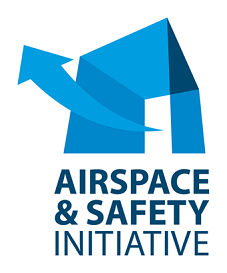
Frequency Monitoring Secondary Surveillance Radar (SSR) codes (often referred to as ‘listening out’ squawks) are soon to be allocated for use in the vicinity of Leeds Bradford and East Midlands airports, the UK Civil Aviation Authority (CAA) has announced. The codes will become effective from 28 May 2012 for Leeds Bradford, and 30 June 2012 for East Midlands. The two new codes will take the total number of frequency monitoring codes across the UK to nine.
The code for Leeds Bradford will be 2677 and the radio frequency to monitor is 133.125 MHz, while for East Midlands the code will be 4572 and the radio frequency 134.175 MHz. An Information Notice (2012/082) with more details has been published by the CAA.
How To Use Listening Squawks
Frequency monitoring codes have played a vital role in reducing infringements of controlled airspace (CAS) by enabling air traffic controllers to alert pilots if their aircraft appears to be going to infringe CAS. Any aircraft fitted with a Mode A/C or Mode S SSR transponder can use these codes.
The listening squawks are designed to enable pilots flying near the boundary of controlled airspace, who are not in two-way communication with an ATSU, to listen out on the controlling frequency of the airspace. By entering the relevant four-digit SSR code into the transponder and listening to the published radio frequency, a pilot signifies to air traffic control that he/she is actively monitoring radio transmissions. If it looks likely an aircraft will infringe controlled airspace, ATC know that they can contact the pilot on the relevant frequency and pass further information as appropriate to the pilot.
The Current List
Belfast Aldergrove / 7045 / 128.500 MHz
Leeds Bradford / 2672 / 133.125 MHz
Doncaster Sheffield / 6170 / 126.225 MHz
Manchester / 7366 / 118.575 MHz
East Midlands / 4572 / 134.175 MHz
Birmingham / 0010 / 118.050 MHz
Luton & Stansted / 0013 / 129.550 MHz (LTN) & 120.635 MHz (STD)
Gatwick & London City / 0012 / 126.825 MHz (LGW) & 132.700 MHz (LCY)
Southampton & Bournemouth / 0011 / 120.225 MHz (SOU) & 119.475 MHz (BOH)
Olympic Squawk For Farnborough
The CAA also announced that a code is being introduced for use by Farnborough Airport for the duration of the London 2012 Olympics. From 14 July to 15 August 2012 Temporary Controlled Airspace (CAS (T)) is being put in place around Farnborough to help deal with a significant expected increase in traffic. To help prevent any infringements of this CAS(T), pilots operating outside the Olympics Restricted Zone R112 in the Farnborough (West) LARS area who are unable or do not wish to receive an air traffic service, can select code 5047 on their transponders while listening on the Farnborough (West) LARS frequency, 125.250 MHz.
Source: Airspace & Safety Initiative
‘Centre of excellence’ at Cambridge.
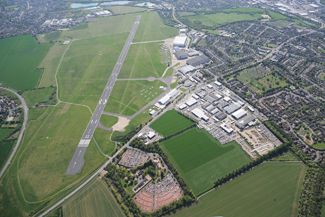 The owners of Cambridge airport, the Marshall Group, are investing £20 million to expand the airport by developing on the green field site to the south side of the runway, aiming to transform the airport into a vibrant business hub.
The owners of Cambridge airport, the Marshall Group, are investing £20 million to expand the airport by developing on the green field site to the south side of the runway, aiming to transform the airport into a vibrant business hub.
Included in the plans are a construction of a new taxiway and major rehabilitation of the runway, in conjunction with improved drainage to deliver additional environmental benefits.
The positioning of the airport is a key ingredient to its planned success. With Cambridgeshire and Suffolk both leading the UK research and development industry, there is demand for quick and easy access to key financial and industry cities in Europe.
Archie Garden, airport director of Cambridge explains how he is keen to attract new businesses to the airport, "All our buildings are currently full but we'd like to entice new tenants to the airport which will support the on-going development of Cambridge Airport as a leading centre of excellence for aviation. We have the land available to the south side of the airport and this is driving the next phase of our strategy to develop new buildings in the area."
The large runway, complete with full ATC and airport services, makes it suitable for jets up to B757 and ACT/A320 size and therefore offers itself as an uncongested gateway for business and commercial aviation.
From May, the airport also welcomes Saturday services to Jersey with ATR42 aircraft and from September, flights to Burgundy (France) are scheduled to operate twice-weekly.
There are also high hopes for Cambridge during the Olympic period as it is one of only five regional airports in the UK capable of accepting business and passenger services with a 24/7 slot allocation.
CAA Approves Cranfield Instrument Approach
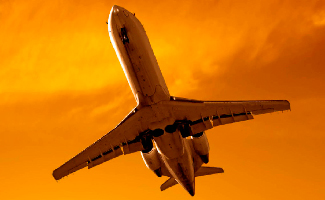
The UK Civil Aviation Authority (CAA) has approved a proposal from Cranfield Airport to introduce Instrument Approach Procedures (IAPs) to Runway 03 at the airport. The IAPs will consist of a NDB/DME and a RNAV (Global Navigation Satellite System) procedure.
The CAA has made the change in order to provide a full instrument approach capability to Runway 03. The current arrangement requires that, when the runway is in use, aircraft must make an instrument approach to Runway 21 followed by a visual circling manoeuvre to land on Runway 03. In comparison, the new procedures will make landing at Cranfield easier and safer.
Stuart Lindsey, Head of the Controlled Airspace Section at the CAA, said: “The new procedures at Cranfield will significantly improve the airport’s ability to carry out operations in poor weather conditions.”
The airspace change approval follows an extensive consultation carried out by the airport. The CAA considers that the introduction of the IAPs is likely to have a negligible impact on local airspace users and the non-aviation community in the area, but nonetheless the change will be subject to a review after the IAPs have been in place for a year.
The NDB/DME procedure is planned to implemented on 28 June 2012 and the RNAV (GNSS) procedures on 26 July 2012.
Charts showing the new IAPs will be available on the Aeronautical Information Service website www.ais.org.uk 28 days before the implementation dates.
The CAA has also published its official decision letter explaining the change.
Source: CAA Newsroom
Farnborough Airshow
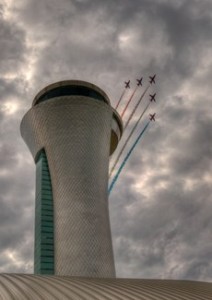 While understandably most people’s focus this summer will be on the Olympics and its associated airspace restrictions and changes, the UK is also hosting the world’s biggest trade airshow, which has its own airspace changes and restrictions. Although the organisers moved the date to deconflict with the Olympics, the security airspace does overlap with the show and then runs consecutively into the temporary CAS supporting the Games.
While understandably most people’s focus this summer will be on the Olympics and its associated airspace restrictions and changes, the UK is also hosting the world’s biggest trade airshow, which has its own airspace changes and restrictions. Although the organisers moved the date to deconflict with the Olympics, the security airspace does overlap with the show and then runs consecutively into the temporary CAS supporting the Games.
The Important Part
From 1 July onwards be sure to keep a close eye on the NOTAMs. These will indicate the periods of time when the Temporary Restricted Airspace RA(T) that is being put in place to protect Farnborough airshow traffic will be active.
This airspace will either take the form of the 'Small RA(T)' or the 'Large RA(T)'. The smaller restriction is designed to protect the arrivals and departure of airshow traffic with the larger airspace reserved for the flying displays themselves. Graphical charts depicting these two RA(T)s can be found by clicking on the links above. These are currently draft versions until published in Statutory Instrument.

The Finer Details
So, what will be in place at Farnborough? ATC briefs as follows:
Firstly, on 2 July, the airshow validation week (2 July – 7 July) starts. Every aircraft flying as part of the show must demonstrate their displays, including good weather (High) and bad weather (Low) versions, and the transition between the two, in front of a rigorous approval committee called the Flying Control Committee. Pilots must prove they can fly their selected display safely and that the displays are suitable for the difficult flying restrictions imposed by the geography of Farnborough, the neighbouring airfields and the presence of large amounts of permanent Class A controlled airspace. If they fail any element they will be either asked to modify the routine, demonstrate it again or have their invitation to display revoked.
This process is obviously extremely important and to protect the operation a Restricted Airspace (Temporary) RA (T) will be put in place, but the WOD-OCK corridor is opened to allow GA transit access, subject to ATC workload. The nature of validation means that inadvertent infringement of the airspace will normally involve stopping the display. With over 50 aircraft required to demonstrate over 100 displays, the effects can be catastrophic for timetabling even to the extent of cancelling parts of the display. So we really need people to be briefed and alert if you are operating in this area. We will allow transits where able but this is time critical. Also, please watch out for the temporary holds to the south and north of Farnborough that the aircraft waiting for validation will be using.
We take a breather on 7 July but keep a simple version of the large RA (T) to allow stragglers to validate if allowed – and on 8 July the airspace changes, for the first time, into the ‘small’ RA (T) for the afternoon. This is to protect the final arrivals for the static display – normally the very large commercial airliners.
On 9 July, the show starts with the airspace alternating between ‘small’ and ‘large’ RA (T)’s. The small RA (T) protects the very large number of aircraft that have to arrive/depart outside of show time, the helicopters (600+ movements in the first four days), and the demonstration flights. The large RA (T) protects the displays themselves and these gradually get longer over the week, culminating in the public displays, of over four hours, at the weekend.
Then it gets more complicated. On the 14th July the RA (T)s get incorporated into the Olympics security Restricted Zone (R112) and all the regulations associated with that need to be observed. Be careful how you flight plan if you want to transit the airspace – the WOD/OCK corridor will still be open but transits through the large RA (T) may be difficult. The main heliport closes for the weekend, but there are over 600 helicopter pleasure flights in the show area each day —
Coinciding with the introduction of the Olympics temporary controlled airspace is Fly Away Day on the 16th July, where all the static and flying display aircraft are required to depart unless they have special permission to stay. This means 150 departures on top of our normal 150 aircraft movements. Farnborough ATC have chosen to have a CTR/A the same shape as the RA (T), primarily because local pilots are used to flying with these restrictions. So, on the 16th July, the ‘small’ RA (T) morphs seamlessly into CAS (T), still surrounded by the Olympics Restricted Zone (R112), but now with further Olympics CAS (T) to the west. We have tried to keep the latter as simple as possible in terms of bases – 2,500ft and 3,500ft in the west and following existing airspace boundaries so ground landmarks are still useable.
Farnborough LARS West will still operate, but LARS North and East will be closed until the 16th August. This area will be controlled by the Military controllers providing the Atlas air traffic control service in the Restricted Zone (R112) using the Farnborough radio frequencies. London FIS is still available as well as Southampton, Odiham, Benson and Brize Norton.
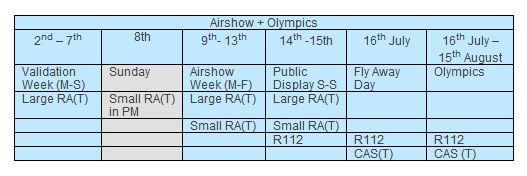
Please be careful and plan fully using NOTAMS, AICs and other services such as SkyDemon Light. It is even more crucial this year especially the timing of the ‘small/large’ RA (T)s, and the crucial change periods for the transition to the Olympics.
Source: www.olympics.airspacesafety.com
Southend & EasyJet Ops
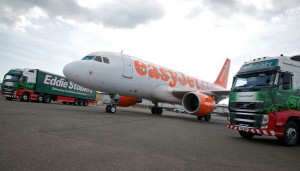 EasyJet operations from Southend began during the first week in April with three Airbus A-319s operating about 70 departures and 70 arrivals per week. Southend has installed radar and SSR and it would be sensible to give them a call if you are flying locally or passing through their area. There is no new controlled airspace so these aircraft will be operating in Class G on arrival and departure but you can make the area safer by just letting them know you are there.
EasyJet operations from Southend began during the first week in April with three Airbus A-319s operating about 70 departures and 70 arrivals per week. Southend has installed radar and SSR and it would be sensible to give them a call if you are flying locally or passing through their area. There is no new controlled airspace so these aircraft will be operating in Class G on arrival and departure but you can make the area safer by just letting them know you are there.
This map shows the approaches and departures from Southend.
Although routing will depend on clearance into CAS, departures are likely to follow the blue lines on the chart and arrivals the brown dashed lines. The final approaches on the runway centrelines are marked on the VFR charts and are an area you may want to take particular care in. As ever the first wave of the day is likely to leave Southend before 0800 local and return around 1000. Depart again before 1100, returning and leaving again between 1530 and 1700 and finally returning after dark. So there are some specifically busy windows during the day; mid morning and mid to late afternoon.
To help you, easyJet aircraft will minimise the time spent in Class G airspace by holding on the ground until they expect to be given a clearance to enter controlled airspace and they will limit their speed to 220 kts in Class G. If they are held below CAS they will maintain altitude 3000ft. Arrivals will stay in CAS as long as possible but they will have to descend before reaching final, either for an ILS or visual approach. And they have helpfully painted their aircraft bright orange so they are easier for you to see.
They want to stay clear of us so let’s help them by talking to Southend whenever we are in that corner of the country. They are waiting for your call on 130.775 ….. Give them a try.
Source: Light Aircraft Association
Diamond Jubilee Flypast
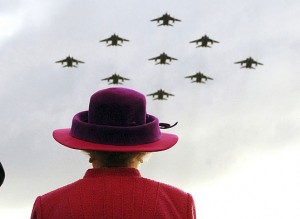 The UK Civil Aviation Authority (CAA) has approved a request from the Ministry of Defence (MoD) to impose a Temporary Airspace Restriction around a large military flypast over Windsor on Saturday 19 May 2012 to celebrate Her Majesty the Queen’s Diamond Jubilee. The flypast will comprise two separate aircraft formations – nine Typhoon fighter jets open the event, followed later by a large mixed formation which will include two formations of Tucano and Hawk aircraft; The Red Arrows; and aircraft from the Battle of Britain Memorial Flight. In all there will be a total of 85 aircraft taking part in the flypasts.
The UK Civil Aviation Authority (CAA) has approved a request from the Ministry of Defence (MoD) to impose a Temporary Airspace Restriction around a large military flypast over Windsor on Saturday 19 May 2012 to celebrate Her Majesty the Queen’s Diamond Jubilee. The flypast will comprise two separate aircraft formations – nine Typhoon fighter jets open the event, followed later by a large mixed formation which will include two formations of Tucano and Hawk aircraft; The Red Arrows; and aircraft from the Battle of Britain Memorial Flight. In all there will be a total of 85 aircraft taking part in the flypasts.
Two Temporary Airspace Restrictions or RA(T)s will be in force from 09:30 to 11:30 hours (UTC) and from 09:50 to 11:50 hours (UTC) on 19 May and affect a broad corridor of airspace from the South Coast to west London, corresponding to the route the formation will fly to reach Windsor, and then to the north and northwest of Windsor to facilitate the dispersal of the aircraft. The RA(T) can be viewed and downloaded from this chart.
The CAA said the RA(T)s would be necessary to ensure the safety of aircraft involved in the formation as well as that of other airspace users. The MoD will be carrying out practice runs over the west coast of North Wales between 10:00 and 12:00 on 15 and 16 May.
Impact On Fairoaks
Part of the RA(T) consists of Area C which is located immediately south of the Fairoaks ATZ and is active from 09:30 to 11:30 UTC. It extends from SFC-2500 AMSL and will result in all operations from Fairoaks being subject to clearance from Swanwick Military. Recent discussions with the CAA Airspace Utilisation Section have indicated that such a clearance is extremely unlikely and as a result, unless there is any further change, the airfield management has little choice but to temporarily close the ATZ to traffic for the period 09:30 - 11:30 UTC on Saturday 19 May.
Operations will still be running as normal either side of these times. Extra pre-flight planning should be taken by those intending to depart Fairoaks before the 09:30 UTC closure, to ensure their planned route does not pass through any of the RA(T) which stretches south of Fairoaks towards Goodwood and also north of the Heathrow CTR towards Oxford.
Full information on the flypast is available from the following Aeronautical Information Circulars.
AIC M 041/2012: "Restriction of Flying Regulations - Her Majesty The Queen’s Diamond Jubilee Flypast, Windsor, Berkshire 19 May 2012"
AIC M 040/2012: "Restriction of Flying Regulations - Her Majesty The Queen’s Diamond Jubilee Flypast Rehearsals, Wales 15/16 May 2012"
Spitfire Rebuilt At Biggin Hill
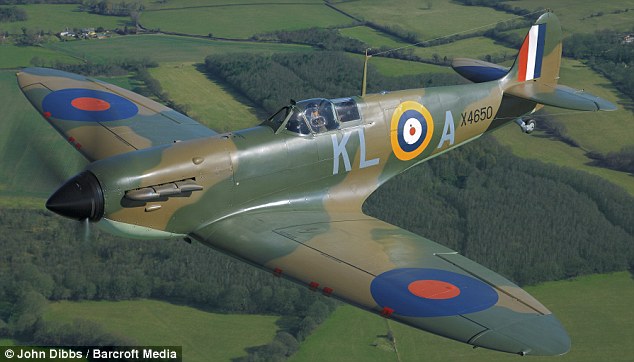 The Mk1 Supermarine Spitfire, one of just three still in airworthy condition, has been completely rebuilt at Biggin Hill airfield following an investment of nearly 8 years and £3 million.
The Mk1 Supermarine Spitfire, one of just three still in airworthy condition, has been completely rebuilt at Biggin Hill airfield following an investment of nearly 8 years and £3 million.
The aircraft had originally been submerged in a North Yorkshire river after it's pilot, then 20 year-old Howard Squire, bailed out in 1940 following an accident during a training exercise. When the water level fell during the drought of 1976, the wreckage was then discovered and ended up in the hands of a North Yorkshire collector.
Peter Monk, a former commercial pilot who runs The Spitfire Company at Biggin Hill, came across the legendary fighter in 2004 when he exchanged it for a truckload of Avro Lancaster bomber parts.
Mr Monk explains, 'I was on the search for Spitfire parts, so I went to see this chap in Yorkshire.
He mentioned he had some wreckage in store and I was taken aback by how much there was of it.
There was the fuselage, engine, propeller and a third of each wing. There was more than enough to start a restoration.'
Joined by a team of around 30 dedicated restorers, Peter Monk was kept on to supervise the restoration. 'The whole point was to use as many original parts as possible,' he says. 'It would have been easy to get these parts made new, but I would rather get in the car and drive 100 miles if an original part exists. It's a testament to how good they were in the first place - that so much effort was put into the original parts.'
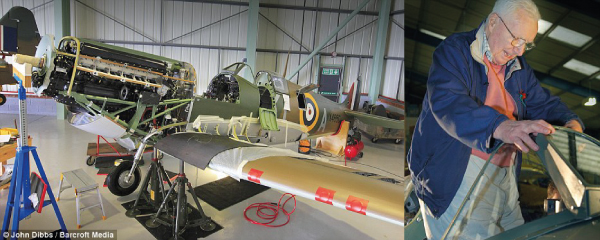
During the restoration, the Spitfire was brought by Texan businessman Dan Friedkin. The purchase makes Dan (46) in conjunction with his billionaire farther, Tom, the owner of two airworthy Mk1s - the final one being owned by the Queen.
The aircrafts original pilot, Howard Squire - who was shot down near Calais in February 1941 and spent more than four years as a PoW - was reunited with the plane two years ago, months before his death at the age of 90.
Pilot Paul Bonhomme had the honour of flying the aircraft on 9 March 2012 after its restoration and describes the experience. 'Flying it is a bit nerve-racking as you are taking a priceless piece of history into the air. It's like driving down the High Street in a Ford Model T. But it flies brilliantly. My strongest feeling is to give thanks to those guys who were there to fly these in the first place, so we can do this now.'
Laser Attacks On The Rise
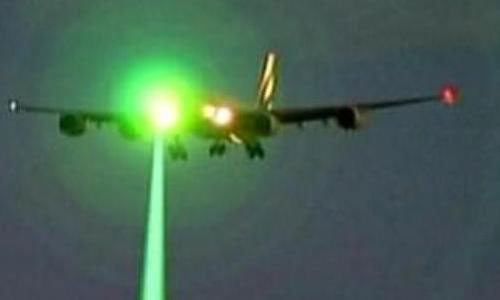 With Liverpool John Lennon airport alone reporting 93 incidents in the last 12 months, the shining of lasers into the flight decks of aircraft on final approach is alarmingly on the increase.
With Liverpool John Lennon airport alone reporting 93 incidents in the last 12 months, the shining of lasers into the flight decks of aircraft on final approach is alarmingly on the increase.
Schemes have been redoubled in an attempt to catch the offenders which have been warned by the police to expect the full force of the law as a result of endangering passengers lives. With the offence being illegal in the UK since 2010, there have already been several successful prosecutions - for which the maximum possible sentence is 5 years imprisonment.
One of the main contributory factors to the increase is the low cost and wide availability of the lasers, available from as little £8 and easily obtainable in shops or online.
A spokesman from BALPA (British Airline Pilots Association) said:
"Pilots can easily be temporarily blinded by laser attacks. Being blinded or dazzled by these incredibly bright lasers puts everyone's life on board that aircraft at risk. People who do this maliciously are playing Russian roulette with people's lives.
The police are taking this matter more and more seriously, but we would like to see custodial sentences being the norm.
A longer term way of dealing with this problem is by having stronger regulation over the sale, import and licensing of strong laser devices which BALPA supports."
If subject to a laser attack, flight crews are to report the incident to ATC and also file an MOR (Mandatory Occurrence Report) after flight. The CAA has also released a self-assessment tool for flight crew to determine the likelihood of having sustained eye damage following a laser attack.
The Aviation Laser Exposure Self-Assessment (ALESA) card is available online from the CAA.
Customs Withdrawn From Many French Airfields
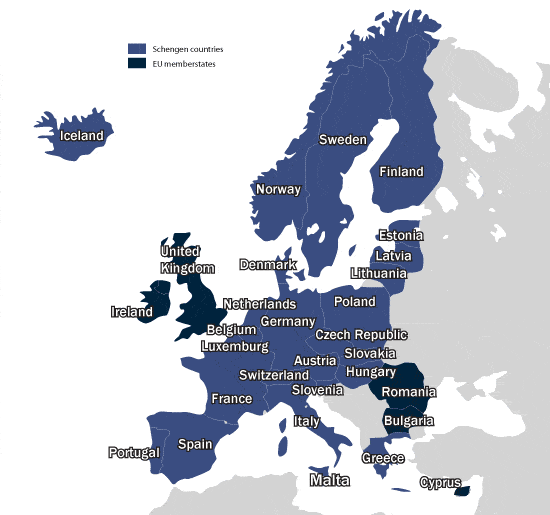 The French government is withdrawing Customs from dozens of smaller airfields, which will have a major impact on GA flights from the UK because Britain has never signed up to the Schengen Agreement allowing free travel across European borders. Some Swiss pilots will also be affected.
The French government is withdrawing Customs from dozens of smaller airfields, which will have a major impact on GA flights from the UK because Britain has never signed up to the Schengen Agreement allowing free travel across European borders. Some Swiss pilots will also be affected.
A list of airfields from which Customs has been withdrawn has been confirmed by Emmanuel Davidson of AOPA France. They are Meaux-Esbly, Pontoise, Toussus Le Noble, Valenciennes-Denaine, Nancy-Essen, Pontarlier, Reims-Champagne, Saint-Yan, Vesoul-Frotey, Courcheval, Megeve, Roanne-Renaison, Valence-Chabeuil, Gap-Tallard, Albi-le-Sequestre, Cahors-Lalbenque, Castres-Mazamet, Bourges, Dieppe-St-Aubin, Granville, Morlaix-Ploujean and Quimper-Plughaffen. Customs will not be available even on 24 hours notice. Airfields which have been earmarked to have Customs facilities removed by summer 2012 include Amiens-Glisy, Abbeville, Calais, Montbeliard-Courcelles, Besancon-La-Veze, Colmar-Houssen, Nevers-Fourchambault, Epinal-Mirecourt, Auxerre-Branches, Vichy-Charmeil, Annemasse, Le Castellet, Agen-La Garenne, Lannion, Laval-Entrammes, Rouen-Vallee de Seine, Orleans-St Denis de Hotel.
Emmanuel Davidson says the decisions has been taken by the French finance ministry, which is responsible for customs. "Although we cannot understand the reasoning behind the decision, it makes things very difficult for many pilots either based in France or for foreign pilots coming or going to a country which has not signed the Schengen treaty," he says.
For pilots wishing to use Toussus le Noble (LFPN), for instance, it means that they cannot clear Customs if they are arriving or departing from the UK or the Channel Islands. Toussus is a business and general aviation airport. Many business jets are based there.
The only airports in the Paris area with Customs available are now Lognes (750 meters hard runway), not IFR, not usable at night; Charles De Gaulles International (not accessible to GA); Orly International (not accessible to GA); Paris le Bourget (not accessible VFR, €500 in landing and mandatory handling charges.
"A pilot coming back from Guernsey to Toussus needs to clear customs either in Dinard, Deauville or Cherbourg, where Customs closes at 1900 at the latest. Therefore it is impossible to spend the week-end in Guernsey without leaving early in order to clear Customs. Your week end is going to be cut short. The Finance Ministry is deaf to any argument presented by airfield management, AOPA, or even the DGAC."
While Switzerland has signed the Schengen Treaty it has no customs treaty with France. Therefore, the interpretation of French customs is that people may circulate freely, but in the case of general aviation, pilots, their passengers, luggage and goods transported are subject to customs inspection. The exception is Geneva, where a special treaty is in place because part of Geneva Airport is on French soil and inspection or non-inspection by Swiss customs is considered as a French customs inspection and vice versa.
*This article is taken from IAOPA. Further information on the association is available from www.iaopa.eu
Too Rich?
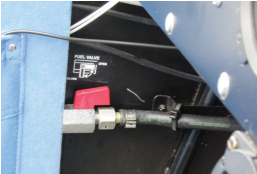 The AAIB’s Bulletin 10 of 2011 includes a report of an accident to a EV-97 Eurostar. It seems the pilot had difficulty starting the engine, and was experiencing canopy misting which was undoubtedly a distraction. Having used the choke during the start procedure, he apparently decided he had over-fuelled the engine so, to weaken the mixture for a further attempt, he selected the fuel cock OFF. When he did line up for takeoff, the engine failed at about 10 feet, and he was unable to prevent the aircraft over-running the strip end and striking obstacles.
The AAIB’s Bulletin 10 of 2011 includes a report of an accident to a EV-97 Eurostar. It seems the pilot had difficulty starting the engine, and was experiencing canopy misting which was undoubtedly a distraction. Having used the choke during the start procedure, he apparently decided he had over-fuelled the engine so, to weaken the mixture for a further attempt, he selected the fuel cock OFF. When he did line up for takeoff, the engine failed at about 10 feet, and he was unable to prevent the aircraft over-running the strip end and striking obstacles.
GASIL (General Aviation Safety Information Leaflets) articles in the past have highlighted the fact that the fuel systems in many aircraft will provide enough fuel for a short taxi and take-off, even if the fuel cock is selected OFF. However, the extra fuel required at full power rapidly empties the lines, and the engine is likely to stop at a critical phase of flight. Whatever the distractions or hurry, pre-take-off vital actions are intended to identify and resolve any previous incorrect selections. They must be carried out carefully, and with the expectation that we shall find something wrong during them.
*The following article has been taken from GASIL Issue 2 of 2012. Available for download from www.caa.co.uk/gasil.
